
Nestled in the tempestuous Southern Ocean, Campbell Island stands as a testament to nature’s grandeur.
Part of New Zealand’s subantarctic archipelago, Campbell Island exudes an aura of mystery and raw beauty.
Located about 700 kilometers south of New Zealand’s South Island, it is renowned for its rugged terrain, unique wildlife, and rich history.
For intrepid travelers seeking authentic encounters with unspoiled wilderness, Campbell Island beckons with its allure.
Its remote location and pristine ecosystems offer a rare opportunity to immerse oneself in nature’s splendor.
From birdwatching enthusiasts to adventurers craving untamed landscapes, Campbell Island promises unforgettable experiences.
Exploring Campbell Island isn’t just about ticking off a destination; it’s about delving into a world where nature reigns supreme and human presence is but a fleeting whisper.
As travelers venture across its windswept shores and moss-clad hills, they become part of a narrative that transcends time—a narrative shaped by the elements and the resilient life that thrives in its midst.
Whether seeking solace amidst windswept tussocks or marveling at the sight of albatrosses soaring overhead, visitors to Campbell Island are invited to witness nature’s grand spectacle.
In a world where untouched wilderness grows increasingly scarce, Campbell Island stands as a beacon of conservation and appreciation for the natural world.
Geographical and Environmental Overview
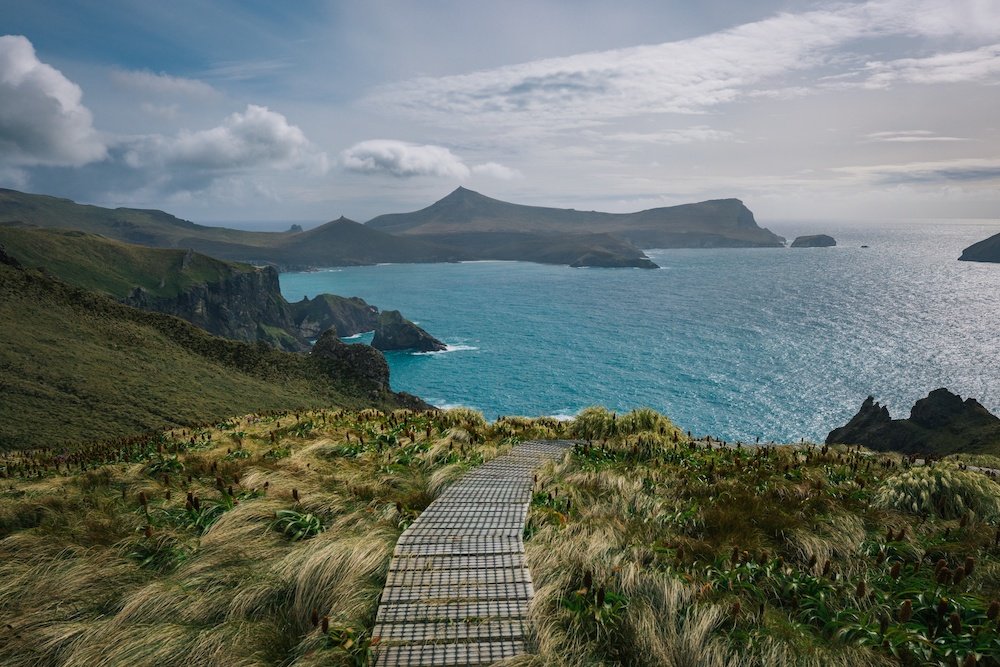
Location and Accessibility
Campbell Island, a jewel of New Zealand’s subantarctic region, is situated approximately 700 kilometers south of the South Island.
Its remote location in the heart of the Southern Ocean lends it an air of isolation and mystique.
Access to Campbell Island is primarily facilitated through organized tours and expeditions, often departing from ports such as Bluff or Invercargill.
Unique Geographical Features
Characterized by its rugged coastline and dramatic landscapes, Campbell Island boasts an array of unique geographical features.
From towering sea cliffs to windswept plateaus, the island’s topography is a testament to the forces of nature.
Notable landmarks include the majestic Dent Island, with its sheer cliffs rising dramatically from the sea, and the windswept tussock fields that carpet vast swathes of the island’s interior.
Flora and Fauna
Campbell Island is renowned for its rich biodiversity, harboring a multitude of plant and animal species found nowhere else on Earth.
The island’s flora includes endemic megaherbs—plants characterized by their large, vibrant flowers—as well as unique mosses, lichens, and ferns.
In addition to its botanical wonders, Campbell Island is a haven for wildlife enthusiasts, boasting a diverse array of seabirds, including albatrosses, petrels, and penguins.
The island’s surrounding waters teem with marine life, from seals and sea lions to elusive cetaceans such as whales and dolphins.
As one explores Campbell Island’s pristine landscapes and encounters its remarkable inhabitants, it becomes evident that this remote outpost is a sanctuary for life—a testament to the resilience and adaptability of nature in the face of adversity.
History and Heritage
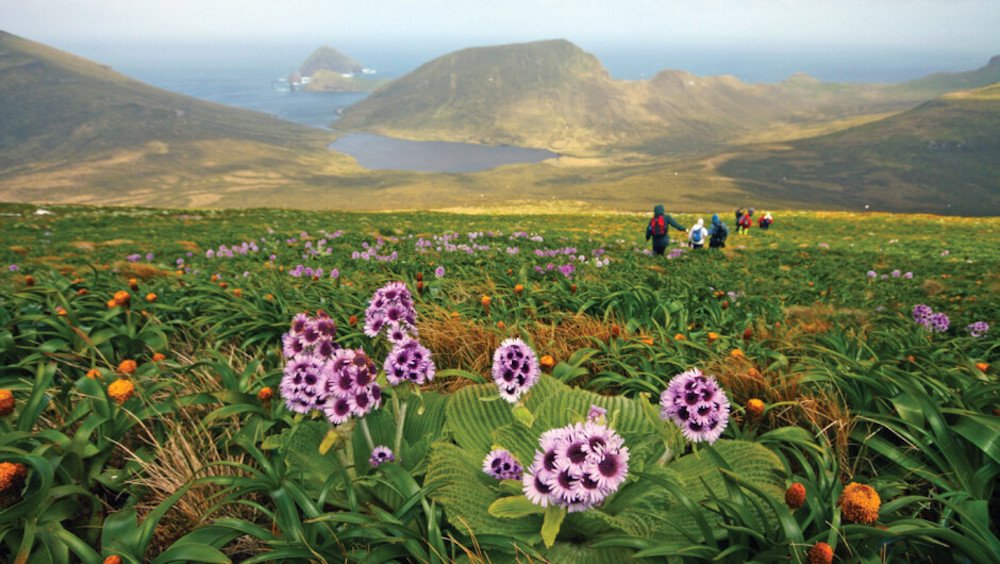
Indigenous History and Culture
Prior to European exploration, Campbell Island was uninhabited by humans.
However, it holds significance in Māori oral tradition, with its presence noted in ancestral narratives and legends.
Though no permanent settlements existed on the island, it played a role in the cultural and navigational practices of the Polynesian voyagers who explored the vast expanse of the Pacific Ocean.
European Exploration and Settlement
The first recorded sighting of Campbell Island by Europeans occurred in 1810, when Captain Frederick Hasselborough of the sealing vessel Perseverance chanced upon its rugged shores.
Subsequent expeditions by sealers and whalers led to the exploitation of the island’s abundant fur seal and elephant seal populations.
In 1833, the island was annexed by the British Empire as part of New Zealand, marking the beginning of European influence in the region.
The 20th century saw the establishment of a meteorological station on Campbell Island, highlighting its strategic importance for scientific research and exploration.
Despite periods of human habitation and exploitation, Campbell Island’s remote location and harsh climate limited permanent settlement, allowing its natural ecosystems to remain largely undisturbed.
Conservation Efforts and Protected Status
Recognizing the ecological significance of Campbell Island, efforts to protect and preserve its unique biodiversity began in the latter half of the 20th century.
In 1954, Campbell Island was designated as a nature reserve, laying the groundwork for future conservation initiatives.
In 1998, it was inscribed as a UNESCO World Heritage Site, along with other subantarctic islands in the region, in recognition of its outstanding universal value and ecological importance.
Today, Campbell Island enjoys protected status under New Zealand law, with strict regulations in place to safeguard its fragile ecosystems and wildlife.
Conservation efforts focus on eradicating invasive species, restoring native habitats, and monitoring populations of endemic flora and fauna.
Through collaborative research and stewardship, Campbell Island continues to serve as a beacon of conservation and environmental stewardship in the Southern Ocean.
Things to Do and See
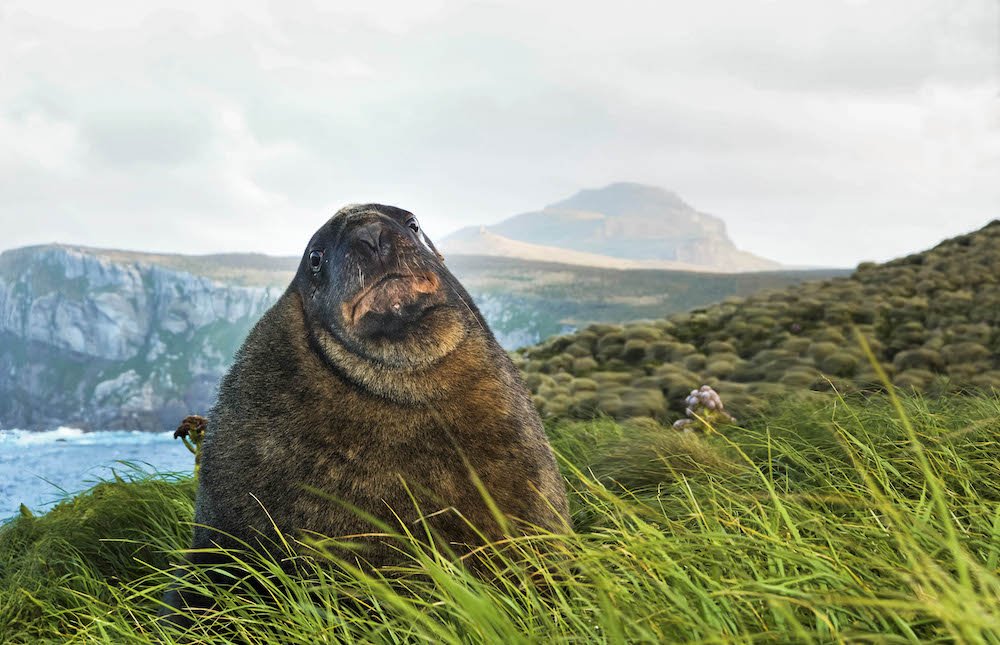
Wildlife Encounters
- Birdwatching Opportunities: Campbell Island is a paradise for birdwatchers, offering unparalleled opportunities to observe a diverse array of seabirds in their natural habitat. From majestic albatrosses gliding effortlessly above the waves to colorful petrels nesting in cliffside colonies, the island is a haven for avian enthusiasts.
- Marine Life Observation: Beyond its shores, Campbell Island’s surrounding waters teem with marine life. Visitors may catch glimpses of playful seals basking on rocky outcrops or encounter pods of dolphins frolicking in the surf. With luck, sightings of majestic whales breaching the surface may also grace the horizon.
Exploring the Landscapes
- Hiking Trails and Scenic Viewpoints: Campbell Island’s rugged terrain beckons adventurers to explore its windswept shores and moss-clad hills. A network of hiking trails offers access to some of the island’s most breathtaking vistas, from panoramic overlooks to secluded coves. Whether traversing windswept plateaus or descending into verdant valleys, each step reveals a new facet of the island’s natural beauty.
- Geological Formations: Geology enthusiasts will marvel at Campbell Island’s geological diversity, from ancient rock formations sculpted by millennia of erosion to dramatic sea cliffs rising precipitously from the ocean. Exploring the island’s geological wonders offers insights into its tumultuous past and the forces that have shaped its rugged landscapes.
Historical Sites and Landmarks
- Remnants of Human Activity: Scattered across Campbell Island are remnants of its storied past, including the ruins of early sealing and whaling stations that bear testament to the island’s maritime heritage. Exploring these historic sites offers a glimpse into the lives of the hardy souls who once called Campbell Island home, enduring harsh conditions in pursuit of fortune and adventure.
- Interpretive Centers: For visitors eager to delve deeper into Campbell Island’s history and natural wonders, interpretive centers provide invaluable insights into the island’s ecological significance and cultural heritage. Through interactive exhibits and informative displays, these centers offer a deeper appreciation for the interconnectedness of life on Campbell Island and the broader Southern Ocean ecosystem.
Practical Information for Visitors
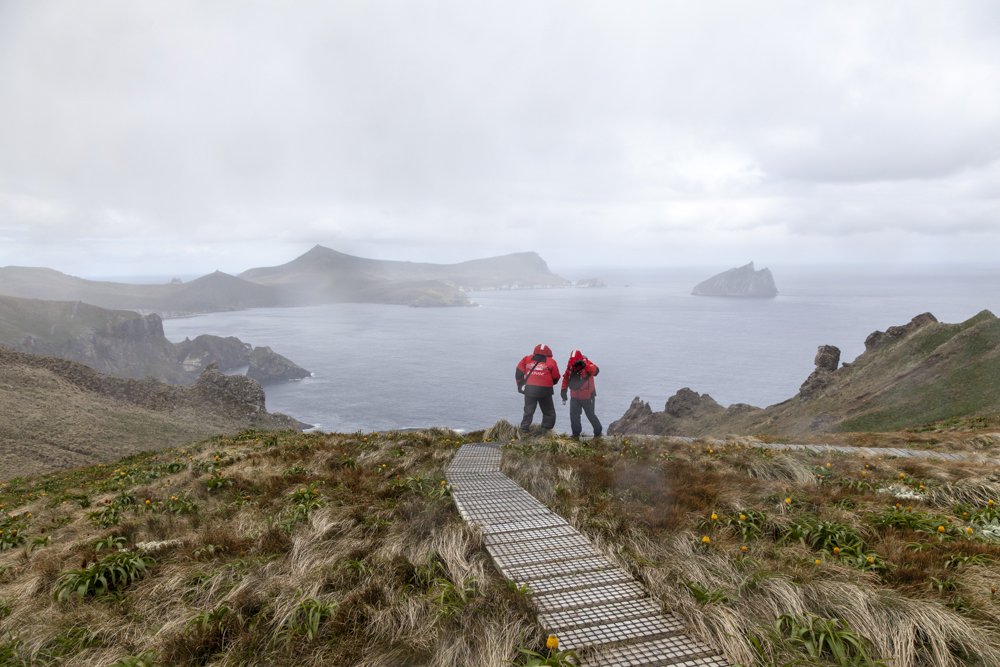
Getting There and Around
- Transportation Options: Access to Campbell Island is primarily facilitated through organized tours and expeditions departing from ports such as Bluff or Invercargill on New Zealand’s South Island. These tours typically involve travel by boat or expedition cruise, with journey times varying depending on weather conditions and vessel speed.
- Permits and Regulations: Before embarking on a journey to Campbell Island, visitors should familiarize themselves with relevant permits and regulations governing access to the island. Due to its protected status, entry to Campbell Island may be subject to permits and compliance with conservation regulations aimed at preserving its fragile ecosystems and wildlife.
Accommodation Options
- Camping Facilities: For adventurers seeking an immersive wilderness experience, camping facilities are available on Campbell Island, allowing visitors to spend nights under the starlit sky amidst the island’s pristine landscapes. Campsites are typically equipped with basic amenities, including tent sites, cooking facilities, and restroom facilities, offering a rustic yet rewarding camping experience.
- Lodges and Accommodations: For those preferring more comfortable accommodations, lodges and accommodations may be available through organized tour operators or research stations on the island. These facilities offer a range of amenities and services, including comfortable lodging, dining options, and guided excursions, providing visitors with a convenient and memorable base for exploring Campbell Island and its surrounds.
Best Time to Visit
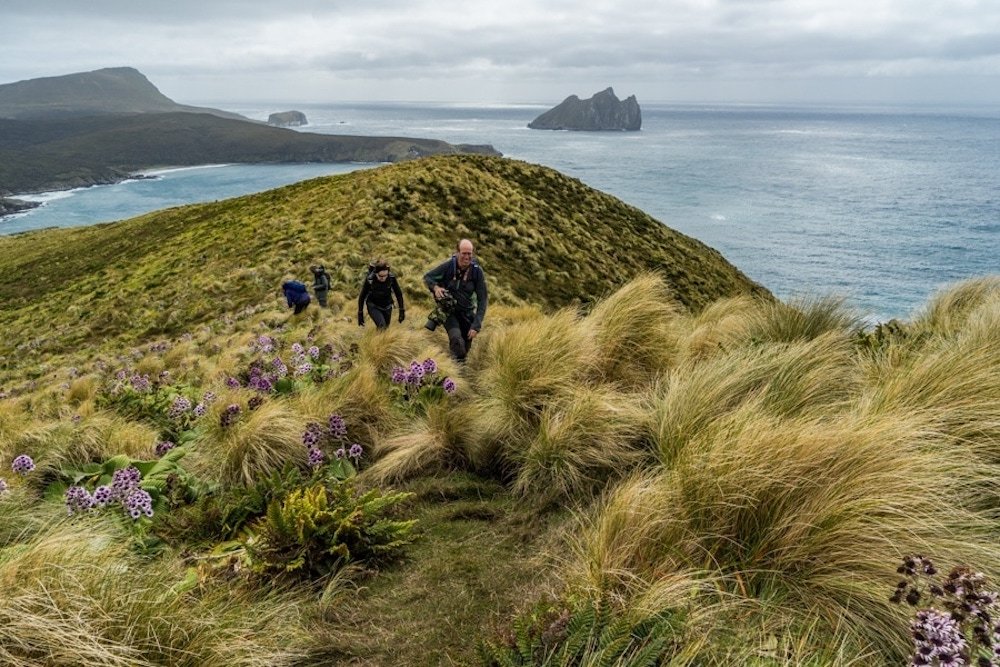
Weather and Climate Considerations
Campbell Island’s weather and climate are characterized by their maritime influence and subantarctic conditions.
Visitors should be prepared for cool temperatures, strong winds, and variable weather patterns year-round.
The island’s climate is largely influenced by the surrounding Southern Ocean, with conditions often subject to rapid changes and inclement weather.
Peak Seasons and Off-Peak Times
- Peak Seasons: The optimal time to visit Campbell Island is during the austral summer months, typically spanning from November to March. During this period, daylight hours are longer, temperatures are relatively milder, and wildlife activity peaks. Birdwatching enthusiasts can witness nesting seabirds and breeding colonies in full swing, while hikers can explore the island’s rugged landscapes under more favorable weather conditions.
- Off-Peak Times: While Campbell Island’s beauty knows no bounds throughout the year, the winter months from June to August tend to be less favorable for visitors due to harsher weather conditions and reduced wildlife activity. However, for those seeking solitude and tranquility amidst the island’s wild landscapes, the winter months offer a unique opportunity to experience Campbell Island in its rawest form, free from the hustle and bustle of peak tourist seasons.
Conservation and Sustainability

Importance of Conservation Efforts
Campbell Island’s pristine ecosystems and unique biodiversity are of paramount importance, serving as a refuge for rare and endemic species found nowhere else on Earth.
As such, conservation efforts play a crucial role in preserving the island’s ecological integrity and safeguarding its natural heritage for future generations.
The fragile balance of life on Campbell Island is susceptible to human impacts, including invasive species introductions, habitat destruction, and climate change.
By prioritizing conservation initiatives and adopting sustainable management practices, stakeholders aim to mitigate these threats and ensure the long-term viability of the island’s ecosystems.
Responsible Tourism Practices
As visitors to Campbell Island, it is imperative to embrace responsible tourism practices that minimize negative impacts on the island’s delicate ecosystems and wildlife.
This includes adhering to designated trails and visitor guidelines, avoiding disturbance to nesting seabirds and marine mammals, and refraining from littering or introducing non-native species.
Participating in eco-conscious tours and supporting sustainable tourism operators can also contribute to conservation efforts on Campbell Island.
By choosing operators committed to environmental stewardship and conservation principles, travelers can help promote responsible tourism practices and contribute to the ongoing protection of the island’s natural treasures.
Tips for Travelers
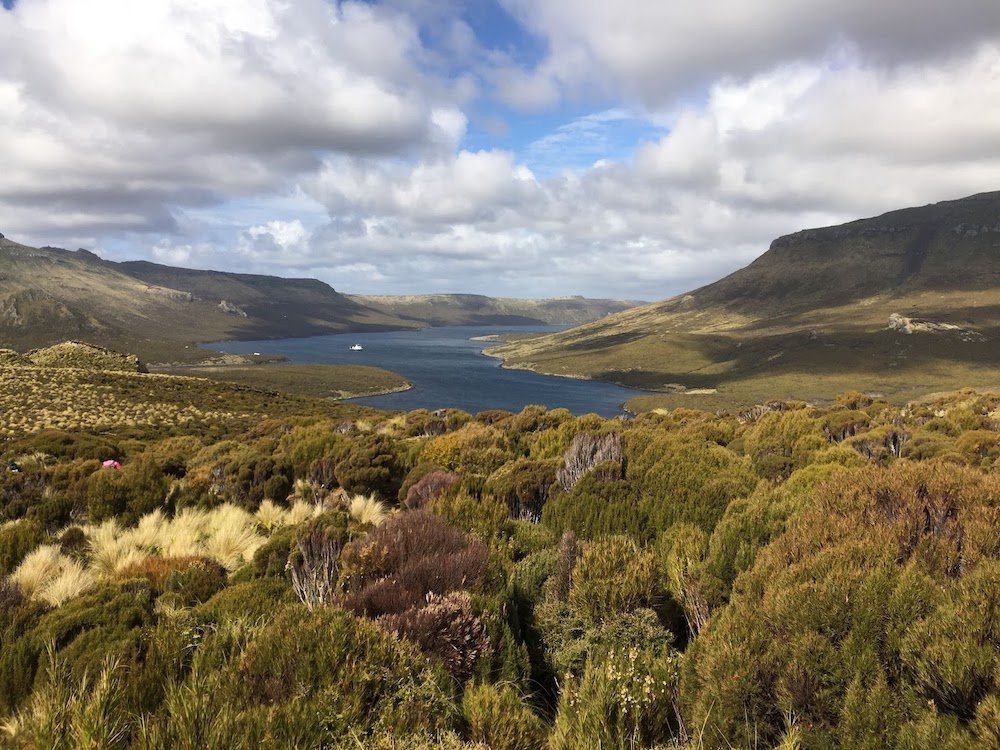
Packing Essentials
- Layered Clothing: Campbell Island’s weather can be unpredictable, with temperatures ranging from cool to cold throughout the year. Pack layered clothing to ensure comfort and adaptability to changing weather conditions.
- Waterproof Gear: Given the island’s maritime climate, waterproof clothing and gear are essential for staying dry and comfortable, especially during inclement weather and outdoor activities.
- Sturdy Footwear: Hiking boots or sturdy footwear with good grip are recommended for exploring Campbell Island’s rugged terrain and traversing its uneven trails.
- Binoculars and Camera: Enhance your wildlife viewing experience by bringing binoculars and a camera to capture memorable moments and sightings of seabirds, marine mammals, and other wildlife.
Safety Precautions
- Stay on Designated Trails: When hiking or exploring the island, stay on designated trails and follow signage to minimize disturbance to sensitive habitats and wildlife nesting areas.
- Be Weather Aware: Keep abreast of weather forecasts and heed warnings from tour guides or park rangers regarding changing weather conditions or potential hazards.
- Emergency Supplies: Carry emergency supplies such as a first-aid kit, high-energy snacks, water, and a means of communication in case of unexpected emergencies or delays.
- Respect Wildlife: Maintain a respectful distance from wildlife and refrain from approaching or disturbing nesting seabirds, seals, or other marine mammals.
Etiquette and Respect for the Environment and Wildlife
- Leave No Trace: Practice Leave No Trace principles by disposing of waste properly, minimizing your impact on the environment, and leaving natural areas as you found them.
- Respect Protected Areas: Observe and respect signage indicating protected areas or restricted access zones, and adhere to conservation regulations aimed at preserving fragile ecosystems.
- Minimize Noise and Disturbance: Keep noise levels to a minimum and avoid sudden movements that may startle or disturb wildlife, allowing them to carry out their natural behaviors undisturbed.
- Educate Yourself: Take the time to learn about Campbell Island’s natural and cultural heritage, and engage in responsible tourism practices that support conservation efforts and sustainable management of the island’s resources.
Conclusion
As we conclude our exploration of Campbell Island, we are left with a vivid tapestry of experiences and discoveries—a testament to the island’s enduring allure and natural splendor.
From its rugged coastlines and windswept plateaus to its diverse wildlife and rich cultural heritage, Campbell Island offers a glimpse into a world untouched by time—a world where nature reigns supreme and human presence is but a fleeting whisper.
As stewards of this pristine wilderness, it is incumbent upon us to embrace responsible tourism practices and uphold the principles of conservation and sustainability.
By treading lightly upon the land and respecting the delicate balance of life on Campbell Island, we can ensure that its natural treasures endure for generations to come.
In the heart of the Southern Ocean, Campbell Island stands as a beacon of hope and resilience—a sanctuary for life in all its forms.
Whether marveling at the sight of albatrosses soaring overhead, tracing the footsteps of early explorers, or simply basking in the tranquility of its windswept shores, Campbell Island invites us to pause, reflect, and reconnect with the wonders of the natural world.
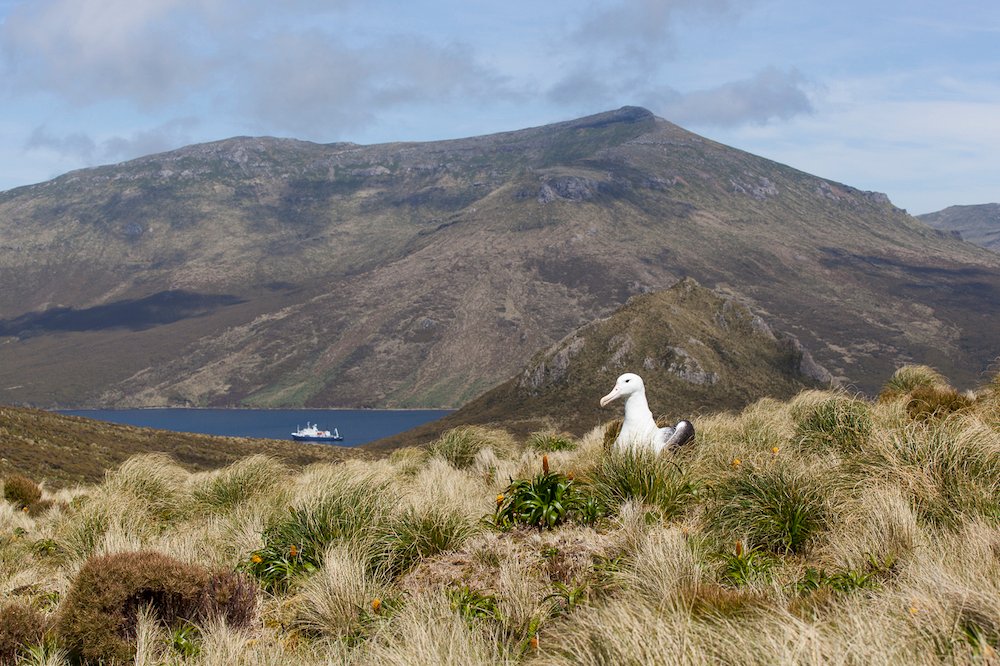
FAQ’s About New Zealand’s Campbell Island:
Can you go to Campbell Island?
Yes, it is possible to visit Campbell Island.
Access to the island is primarily facilitated through organized tours and expeditions departing from ports such as Bluff or Invercargill on New Zealand’s South Island.
These tours typically involve travel by boat or expedition cruise, with journey times varying depending on weather conditions and vessel speed.
However, access to Campbell Island may be subject to permits and compliance with conservation regulations aimed at preserving its fragile ecosystems and wildlife.
What is Campbell Island known for?
Campbell Island is known for its pristine wilderness, unique biodiversity, and rugged landscapes.
Situated in the Southern Ocean, it boasts a rich array of endemic flora and fauna, including megaherbs, albatrosses, and penguins.
The island is also renowned for its historical significance, having served as a base for early sealers and whalers in the 19th century.
Today, it is recognized as a UNESCO World Heritage Site and a sanctuary for wildlife conservation and research.
How many people live on Campbell Island?
Campbell Island is uninhabited, with no permanent population residing on the island.
However, it may host temporary research teams or conservation personnel stationed at scientific research stations during certain times of the year.
Is Campbell Island predator-free?
Efforts have been made to eradicate introduced predators such as rats and mice from Campbell Island in order to protect its native wildlife.
As of the latest information available, significant progress has been made in achieving a predator-free status on the island, allowing native species to thrive in their natural habitats without the threat of predation.
Does anyone live on Campbell Island?
Campbell Island does not have a permanent population.
However, it may accommodate temporary research teams or conservation personnel stationed at scientific research stations for specific research or conservation projects.
What is the history of Campbell Island?
Campbell Island has a rich history dating back to its discovery by Europeans in 1810.
It served as a base for early sealers and whalers in the 19th century, who exploited its abundant fur seal and elephant seal populations.
In the 20th century, it became a site for scientific research and exploration, with the establishment of meteorological stations and research outposts.
Today, Campbell Island is recognized for its cultural and ecological significance, with efforts focused on conservation and preservation of its unique heritage.
How big is Campbell Island?
Campbell Island covers an area of approximately 112.68 square kilometers (43.53 square miles).
It is part of the New Zealand subantarctic region and is characterized by its rugged terrain, towering sea cliffs, and diverse ecosystems.
Despite its relatively small size, Campbell Island boasts a rich biodiversity and is home to a wide variety of plant and animal species found nowhere else on Earth.





